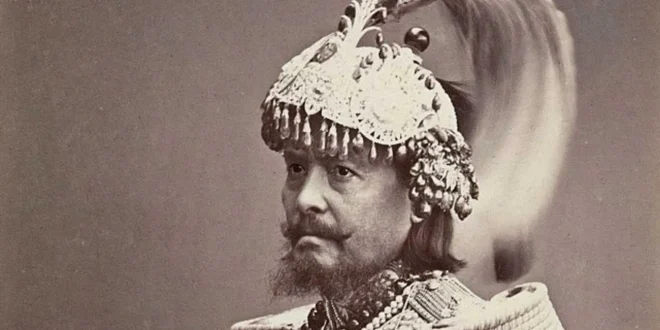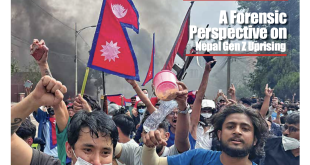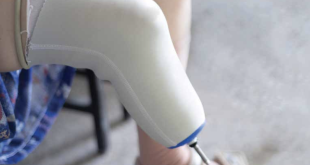Words by Dr. Hemang Dixit
“Jung Bahadur, the visionary leader, may be unofficially proclaimed as Nepal’s first surgeon, introducing minor surgeries and procuring surgical instruments during his historic visit to the Royal College of Surgeons in Edinburgh.”
“Dr. H. A. Oldfield, the British Residency doctor, reveals Jung Bahadur’s fascination with Ayurvedic medicine and his personal laboratory, where he concocted a mysterious medicinal brew containing precious metals, diamonds, and pearls.”
“Jung Bahadur’s significant contributions to medicine include not only his visits to medical institutions but also his excision of a small fatty tumor, showcasing his hands-on involvement in surgical procedures despite lacking formal medical training.”
Introduction
Ironically the first two heroes of medicine in Nepal were non-medical personages! If I had to think of heroes in the medical field in Nepal the first two names that come to my mind are of non medical personnel. The first is Amshuverma, with the title of Pashupati Bhattarak. During his period of rule of the country i.e. 605 – 626 C.E. he is credited with having started Ayurvedic Arogyashalas or health facilities for the people of Nepal. The second person worthy of this title is Jung Bahadur and he may perhaps be also unofficially proclaimed as the first surgeon of the country! This statement may not be labeled as outlandish in view of the fact that the performers of surgeries in the United Kingdom (UK), some centuries back were none other as those referred to as ‘barber surgeons’, who carried on this trade. It is for this historical reason that present day surgeons in the UK, though medical doctors who after years of study and training practice surgery are however presently referred to in their own country as ‘Mr’ rather than ‘Dr’. It is in this light that I take up the tale of Jung Bahadur.
Jung Bahadur
The early life of Jung Bahadur, son of Bal Narsing Kunwar was very difficult. He spent his early years at his Mama’s house grazing sheep and goats. Later, he even took to catching elephants in the Terai. He was an avid gambler. Jung had been told, “If you want to earn a good name, you must let go of greed and adopt compassion. If it will please the masses; don’t hesitate to kill even your own son. Forget about jealousy and anger, forget about wealth, and make moves that please the largest section the population. Make your countrymen, as well as foreigners, believe that you mete out justice fairly, and that you see everyone as family. If you have to lie in the course of politics, do it by deluding the masses so that they remain happy. It will then be easy to remain Prime Minister. Otherwise, there will be trouble.”
It was following the Treaty of Sugauli in 1816 C.E. that the British set up their embassy at Lainchaur. The story goes that they had been offered this site, what was then swamp land by the Nepalis for their Residency in the hope that they would all be victims of the dreaded awal or malaria and all would soon die. This however did not occur as the crafty British first drained the swamp to get rid of the mosquitoes before they built their residences on the given plot of land. Thus they were not much bitten by mosquitoes to become victims of awal. They even built a hospital and had regular postings of doctors there.
Early Medical History of Nepal
This small hospital in the residency compound had a British doctor as a member of the Legation to look after the health of the members therein. The doctors who served in this capacity have also written books about the health conditions then prevailing in Nepal and their experiences. Dr. Oldfield was the medical person there during the time of Jung Bahadur’s premiership of Nepal. These accounts were kept for all to see at the India Office Library then in Aldwych in London, but now in the British Library.
Dr. H. A. Oldfield was a surgeon in the Bengal Army and was transferred to Nepal in 1850 and stayed here till 1863 as the British Residency doctor. Oldfield was also family physician to Jung Bahadur and made weekly visits to Jung’s Durbar at Thapathali. However, Jung Bahadur also believed much in Ayurvedic medicine and had the Vaidhyakhana, set up during Malla times at Hanuman Dhoka transferred to Thapathali. After becoming PM of Nepal, Jung Bahadur was invited to England in 1850 and then he went to Scotland where he visited the Royal College of Surgeons at Edinburgh. He probably bought some surgical instruments when he was there and brought it to Nepal. Oldfield in his accounts says, “I have found it exceedingly convenient to be able to borrow some of his instruments when our hospital was deficient in them.” Oldfield has recorded the excision of a small fatty tumour by Jung Bahadur.
Jung Bahadur apparently dispensed medicine too, for Oldfield writes, “He has a sort of laboratory in his garden where he prepares constantly a large quantity of a particular sorts of medicine in which he has great faith. Its composition is a profound secret; he says it contains the precious metals, even diamonds and pearls. He considers it very valuable, and, I suspect derives a profitable trade by selling it in small quantities to his brethren and family and others when sick. As a compliment to him, and to please him, they will willingly take it, and pay well for it too, whatever faith they may have in its efficacy.”
Another British writer Landon confirms this about Jung Bahadur when he states, “He had an inveterate liking for medical treatment. The medicines he used were Nepalese, not European, but he occasionally called the professional services of Dr. Wright.”
Conclusion
In the annals of Nepal’s medical history, the heroes emerge from unexpected quarters. Amshuverma, a ruler, sowed the seeds of Ayurvedic health facilities, and Jung Bahadur, not a medical professional, but a visionary leader, played a pivotal role in shaping medical practices in Nepal. One recalls that some decades ago that Their Majesties Late King Birendra & Queen Aishwarya were conferred the honorary degrees of FRCS of The Royal College of Surgeons of Edinburgh. Jung Bahadur’s foray into minor surgery, visits to prestigious medical institutions, and the establishment of a medicinal laboratory in his garden underscore his significant, albeit unconventional, contributions to medicine. Jung Bahadur should thus be accepted as one of the medical heroes of Nepal. The Society of Surgeons of Nepal might consider posthumously honoring Jung Bahadur with an honorary membership, recognizing his unique role in the evolution of medical practices in the country.
 Medicosnext
Medicosnext




